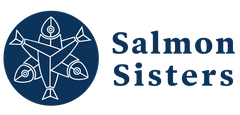The salmon season is officially starting in Alaska! The small fleet of independent fishermen who have harvested salmon for generations from the pristine glacial waters near the Copper River will return to the fishing grounds to catch the first kings and sockeyes of the summer. Though Covid-19 has made the fleet's pre-season boat work and preparations different this year with a 14 day quarantine for crew and captains traveling from out of state, social distancing on the docks and in the town, and other local and statewide safety restrictions, fishermen are heading out as they always have, to harvest wild food from the sea.
Rising out of the Copper Glacier and untouched wilderness of southcentral Alaska, the Copper River is one of the last untouched watersheds in the world. The river flows for 300 miles from its headwaters through the Chugach and Wrangell mountains to the central coast where it empties into the Gulf of Alaska. The Copper River remains a salmon stronghold, untouched by municipalities, dams or mines, thanks to the work of conservation groups.

The fleet will race from the harbor in Cordova, Alaska to the fishing grounds for the first opener on May 14th. The boats in this gillnet fishery are called bowpickers and are usually run by one or two fishermen. The nets themselves extend 150 fathoms (or 900 feet) from the bow of the boat and hang vertically in the water, like a wall in front of salmon swimming by. As they swim through the net, the salmon’s head and gills becomes entangled in the net which makes it possible for fishermen to pull them aboard and pick them, one at a time, from the net. Fishing time and area is limited and managed scientifically by Alaska Department of Fish and Game to ensure abundant future salmon stocks. Sometimes openers last 12 hours, sometimes 24, 36 or more–which means fishermen continue working around the clock to pull in fresh, wild salmon, day and night.

The salmon caught in Copper River are handled with extreme care on their journey from the ocean to plate. Immediately after they are hand-harvested from the net, they are bled to maintain the pure wild taste Alaska salmon is known for, chilled with flaked ice and sea water, and then delivered in small batches to be processed and shipped within hours to stores and restaurants within and outside of Alaska. The fleet takes pride in caring for their catch to ensure consistent quality throughout the season.

King and sockeye salmon are the first fish making their way back to the Copper River in May. The king salmon run lasts through June, the sockeye run through July, and coho return to the river in August and September. These three wild Alaska salmon species live as adults in the Gulf of Alaska and in the Pacific Ocean eating small crustaceans and zooplankton before they return to the Copper River to make the 300-mile migration up the turbulent waters, through deltas, forests, and mountains to spawn. Because the Copper River is so long and steep (an average elevation gain of 12 feet per mile) these fish must pack on sufficient fat reserves to fuel their epic journey–resulting in salmon that is rich in heart-healthy omega-3 fatty acids and flavorful oils.

Emma and Jacob are headed out for the first day of fishing on their boat, the F/V Acadian, and can't wait to be part of the magic of catching the first salmon of the season together. It’s pretty incredible to work on the water against a backdrop of snowy mountains and glaciers, with seabirds dancing overhead and whales breaching on the horizon. Hoping for fat, strong and blue green sockeyes this summer and king salmon that come aboard, literally sparkling. Looking forward to settling into the routine of setting the net, picking the net, feeling the swell of gratitude for every fish that comes aboard because right now it is more important than ever that we get to share our wild catch with the world.

We all need something to celebrate these days, and we hope that you will join us in celebrating the return of the salmon this week by eating some fish harvested fresh from Copper River. While everything seems to be changing in the world right now, knowing that we can still depend on salmon to return this season to nourish our bodies is something we are incredibly grateful for. And we are grateful that we can go to work to harvest good food for you.
Find out where you can purchase Copper River salmon direct from fishermen here, and learn more about the Copper River salmon fishery. Thank you for supporting Alaskan fishermen and their families who work hard to harvest wild seafood responsibly. For salmon recipes, order a copy of our cookbook, The Salmon Sisters: Fishing, Feasting and Living in Alaska!



